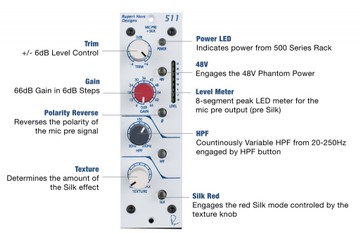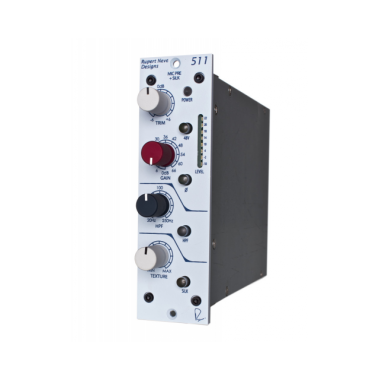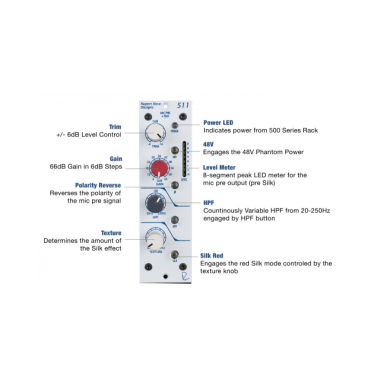- Flyline Music AG
Hauptmenü:
×
- index
-
Produkte
-
Mikrofone
-
3DIO
- Microphones
- Pro Microphones
- Accessoires
- AEA
- Antelope Audio
- Avantone Pro
- Bock Audio Design
-
Cascade Microphones
- Short Ribbons
- Long Ribbons
- Specialty Ribbons
- Accessoires
- Cloud Microphones
- Chandler Limited
- Coles Electroacoustics
- Dizengoff Audio
-
Earthworks
- Vocal Series
- PianoMic Series
- Drum Series
- SR Series
- TC Series
- QTC Series
- Periscope Series
- Measurement Series
- Accessoires
- Ear Trumpet Labs
- Granelli Audio Labs
- Josephson
- Kahayan Pro Audio
- Luke Audio
- Manley Labs
- Mojave Audio
- Placid Audio
- Roswell Pro Audio
- Royer Labs
- Sontronics
- Stager Microphones
- Townsend Labs
- Vanguard Audio Labs
- Warm Audio
-
3DIO
-
Studio Equipment
- A Designs Audio
- ACME Audio
- AEA
- AMS Neve
- Analoguetube
-
Antelope Audio
- Discrete Synergy Core Interfaces
- Discrete Interfaces
- HDX & USB Interfaces
- Thunderbolt & USB Interfaces
- Stereo Converters
- Master Clocks
- Mic Preamps
- Monitor Controller
- API
- Asparion
- Audified
- Avalon Designs
-
BAE
- Guitar Tools
- 500 Series
- Deskop Mic Preamps
- Modules & 19"
- Bettermaker
- Big Bear Audio
- Black Box
-
Black Lion Audio
-
500 Series
- Modules
- Rack
-
Outboard
- Mic Preamps
- Compressors
- Studio Clocks
-
500 Series
-
BURL Audio
- B1 500 Series Modules
- B2 Bombers
- B26 Orca
- B32 Vancouver
- B16 Mothership
- B80 Mothership
-
Chandler Limited
- Abbey Road Series
- 500 Series
- Germanium Series
- Rack Mixer
- Guitar Pedals
-
Cranborne Audio
- Outboard
- Desktop
-
500 Series
- Modules
- Racks
- Crane Song
-
Daking
- Preamplifiers
- Compressors
-
Dangerous Music
- Converters
- Controller
- Router
- Summierer
- Outboard
- Dave Hill Designs
- Dizengoff Audio
-
Drawmer
- Monitor Controller
- Sound Protection
- 60ies / 70ies Series
- MXPro Series
- Gates & Compressors
- Digital Management
- Signal Splitters
- Signal Distribution
- Power Amplifier
- Earthworks
-
Elysia
- 500 Series Modules
- 19" Outboard
-
Empirical Labs
- 500 Series
- 19" Outboard
- Plug-In
- Flock Audio
-
Fredenstein
- MixCube
- HD Reference Preamps
-
500 Series
- Artistic Modules
- F600 Modules
- Racks
- Vintage Analog Series
- Outboard Equipment
- Metering
- Grace Design
- Great River Electronics
-
Heritage Audio
- RAM Series
- Elite Series
- 500 Series
- Table Top Series
- 19" Outboard
- Classic Series
- Highland Dynamics
-
IGS Audio
- 500 Series
-
19" Outboard
- Spring Reverb
- Compressors
- Equalizers
- Preamplifier
- Interphase Audio
-
Inward Connections
- 500 Series Modules
- 19" Outboard
- JDK Audio
-
Kahayan Pro Audio
- Summing Mixers
- Amp/Speaker Selectors
- Preamplifier
-
Kush Audio
- 500 Series Modules
- 19" Outboard
-
La Chapell Audio
- 500 Series Modules
- 1/2 19" Outboard
- 19" Outboard
-
Lindell Audio
- 500 Series Modules
- 500 Series Racks
-
Lisson Grove
- 19" Outboard
- Little Labs
- Locomotive Audio
-
Looptrotter
- 500 Series Modules
- Outboard Equipment
- Modular Console
- Mäag Audio
-
Manley
- Mic Pres / Combos
- Equalizers
- Dynamics
- Maselec
-
Mercury Recording Equipment
-
500 Series
- Modules
- Racks
- Power Supplies
- Accessoires
- Vacuum Tube Outboard
- Solid State Outboard
- Custom Shop Outboard
-
500 Series
- Millennia
-
Mytek Digital
- Brooklyn Series
- Converters
- Private Q2
-
Overstayer
- 19" Outboard
- Pete's Place Audio
-
Phoenix Audio
- Desktop
- 500 Series
- 19" Outboard
- 1/2 19" Outboard
- Pultec
-
Purple Audio
- MFTwenty5 Rack Mixer
- 500 Series
- 19" Outboard
- Q2 Audio
-
Retro Instruments
- 500 Series Modules
- Portable Amplifier
- Outboard Equipment
-
Roger Schult
- 500 Series Modules
- 19" Outboard
-
Power Supplies
- Roll Music Systems
- Rupert Neve Designs
-
Serpent Audio
- 500 Series Modules
- 19" Outboard
-
Shadow Hills Industries
- 500 Series
- 19" Outbaord
-
Solid State Logic
- Audio Interfaces
- Small Format Consoles
- 500 Series
- Analogue Processors
- X-Rack System
- Digital Equipment
- Speck Electronics
-
Spectra 1964
- 19" Outboard
- Desktop
- 500 Series
- Standard Audio
-
Teegarden Audio
- DI Boxes
- Mic Preamps
-
Teknosign
- Box Line
- Preamplifier
- Summing Mixers
- Power Conditioner
- Patchbays/Adapters
- Thermionic Culture
-
TK Audio
- 500 Series Modules
- 19" Outboard
- Tonelux
- Tube Tech
- UK Sound by BAE
-
Universal Audio
- UAD-2 Live Rack
- OX The Amp Top Box
- Audio Interfaces
- UAD-2 Accelerators
- Analog Hardware
- Useful Arts Audio
- Vertigo Sound
- Warm Audio
- Wave Distro
- Weight Tank
- WesAudio
- Whitestone Audio
-
Monitoring
- Auratone
- Avantone Pro
-
Aviom
- FUGU Speakers
- Livemix
- Unity Audio
-
Electronic Sound
-
Mode Machines
- 19" Equipment
- Desktop
- MIDI Tools
- Pedals
- Sequential
-
Studio Electronics
- Boomstar Modular Synthesizers
- Boomstar Modular Eurorack
- Boomstar Desktop Synthesizers
- 19" Analog Synthesizers
-
Vermona
- Modular Module
- Synthesizer
- Drums & Percussion
- Effektgeräte
-
WMD
- Effect Pedals
-
Eurorack Modules
- Aperture
- Arpitecht
- Arpitecht Triad
- Buffered Multiple
- Chimera
- Compressor
- DVCA
- Fracture
- Geiger Counter
- Invert Offset
- Metron
- Micro Hadron Collider
- MSCL
- MM Envelope
- MM Extension
- MM VCA
- Overseer
- Performance Mixer
- PM Mutes Expander
- PM Channels
- PDO MKII
- PDO Triple Bipolar VCA
- Pro Output
- QAAF
- SSM
- SSM Expand
- Synchrodyne
- Synchrodyne Expand
- TRSHMSTR
-
WMD / SSF Collaboration
- Monolith Synthesizer
- Eurorack Modules
-
Mode Machines
-
Accessoires
-
ATR
- MDS-36 Tapes
- Precision Analog Master Tapes
-
Bittree
- Dante Patchbays
- TT Patchbays
- XLR / Jack Patchbays
- TT Patch Cables
- Accessoires
- Cloud Microphones
-
Latch Lake
- micKing®
- Xtra Booms
- iOxbooms
- Parts
-
Pete's Place Audio
- Pan 60
- Recording The Masters
- Scott Liebers
-
Sterling Modular
-
Multistation
-
Plan Consoles
- Racking Systems
-
Multistation
-
Teknosign
- Power Conditioner
- Patchbays/Adapters
-
Vovox
- sonorus
- link
- initio / textura
- sonorus XL
-
Zaor Studio Furniture
-
ATR
-
Mikrofone
- News
- Preislisten
- Links
- Kontakt
Produkte > Studio Equipment > Rupert Neve Designs > 500 Series > Modules
Features
Technische Daten

Modelle / Preise
Zubehör
Hersteller
511
Microphone Preamp with Texture Module
- 500 Series Mikrofon Vorverstärker mit Texture
- Mic Gain bis 66dB in 6dB Steps, mit Trim +/-6dB
- Variabler Highpass Filter von 20 - 250 Hz
- Silk Red Schaltung mit Texture Regler
- 8 Segment LED Peak Meter
- Phantom Power & Phase Reverse
- Trafosymmetrierter Input und Output
With a big, bold preamp and the flexibility of variable Silk/Texture, Rupert Neve designed the 511 to combine classic sonics with 500-series value. Incorporating the 517’s powerful preamp, the 5012’s universally useful sweepable high pass filter, and the transformer-saturating power of a variable silk circuit derived from our flagship Portico II Channel, the 511 is a Rupert Neve-designed micpre for the masses.
Input Section
Input signals may be derived from Mic or Line sources (make sure 48V is off for line sources!). The input has a 10K Ω non-reactive input resistance that handles a full 22dBu signal without the need for a pad. The pre-amp is a TLA non-reactive design that precludes the loading of microphones with limited driving capability. A primary gain control provides 66dB of gain in 6dB increments for easy recall, with a +/- 6dB trim for fine adjustment. For condenser microphones and powered DIs, there is +48V phantom power. A transient-optimized HPF continuously covering the range from 20-250Hz is included to tame rumble and proximity effect.
Texture
One of the key developments in the 511 is the Red Silk / Texture control from the Portico II Channel. Building on the "Silk" mode found in the Portico Series mic pre-amplifiers, Texture is designed to adjust the actual amount of harmonic music content from the source material, in effect, providing wide range of tonal options for the preamplifier. Like the original Portico Silk, the Silk Red / Texture works by reducing negative feedback on the output transformer and adjusting the frequency response to more closely resemble Mr. Rupert Neve’s vintage designs. With the 511, the Texture control allows these techniques to be pushed further than previous designs, adding about 10 times the desirable THD of the original silk control at its maximum setting.
With that said, we have taken great care to ensure that the musical integrity of source material itself will not be compromised by these harmonic controls (these are not to be confused with controls from other manufactures that may "incinerate", "demolish" or "destroy" source material), and we believe they can be confidently utilized to fit the personality of any song, instrument or engineer.
Low Noise, Low Distortion Operation
Much care was given in designing the 511 to produce as little noise and non-harmonic distortion as possible. Carefully implemented signal paths and Class A operation are a large part of the 511’s sweet, whisper quiet performance. For more information, go to Mr. Rupert Neve’s Design Notes.
Why Transformers?
A complete discussion on transformers is out of place at this point, but it is helpful to review some of the essentials where it will be seen that a design needs to be viewed as a whole, not simply from the point of view of a single component.
The fine subtleties of circuit design relating to sonic performance are gradually becoming more clearly understood. For example, research has shown conclusively that frequencies above 20 kHz affect the way in which humans perceive sound quality. But, long before scientific evidence emerged a substantial body of musicians and engineers knew that equipment with apparently the same technical measurements could sound very different.
Incredibly small amounts of musically dissonant odd harmonics have a disastrous effect on the sound quality. Extraneous noise or interference that finds its way into a signal path seriously impairs performance of the whole chain.
Many control rooms make use of outboard gear that is not well protected from external signals. Poor grounding of such equipment can be a serious problem. "Electronically balanced" circuits much used in modern equipment, can give very good measurements on the test bench but they do not provide adequate rejection of the stray fields found in every working environment.
Input and output circuits must be freed from ground dependence so that only the "wanted" signal enters and leaves the processing path. Transformers are the ideal solution. The sweet and silky sound of my classic old favorite consoles was achieved with big transistors and large high quality transformers. Rupert Neve Designs Portico modules achieve similar quality today without the bulk or the cost.
In order that modules can work together as would be expected (i.e. in a proprietary console configuration) without producing hum, R.F. interference, or other interactions, the connecting interfaces, grounding, levels and impedances must receive careful attention. Each of our Portico and 500-Series modules is a complete integral signal processor that delivers its specified performance independently. This is one of the reasons we use transformers.
511
Microphone Preamp with Texture Module

510
500 Series Blank Panel
R6: 500 Series 6 Slot Rack
R10: 500 Series 10 Slot Rack
BAE Duberry Bunion: Module Removing Tool
Rupert Neve Designs
Wimberley TX, USA
As one of the foremost pioneers in recording technology, the sound of Mr. Rupert Neve’s designs have guided the lathe of countless records in almost every conceivable genre. With 80+ years of design experience, Rupert’s story spans the globe; from growing up in Argentina before WWII, to creating the first "modern" recording consoles in England, to elevating analogue circuit design for the digital world in Texas.
Copyright 2017. All rights reserved.








